Committee zeroes-out Recovery Fund requests; Local legislator objects
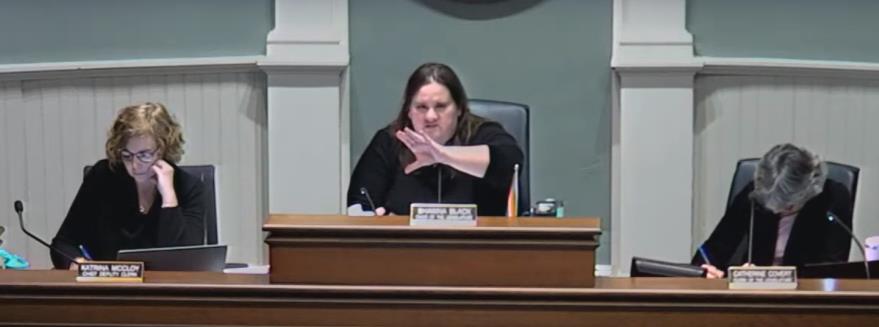
by Robert Lynch, December 6, 2022; additional reporting December 7, 2022
Cayuga Medical Center came out the big winner and Enfield agencies the distinct losers as a six-person committee of Tompkins County legislators Monday adopted its final recommendation for allocating $6.5 Million under this first—and likely only—distribution of federal American Rescue Plan assistance under County Government’s much-coveted Community Recovery Fund.
Yet not so fast. One night later, Tuesday, as the full Legislature convened to conduct other business, members not sitting on the committee made it clear that they, too, want a say in the final call.
“When I look at Enfield, the poorest town in the county, getting nothing, I mean there’s just no fairness in that,” Randy Brown, who represents Enfield’s southern half, told legislative colleagues at Tuesday’s meeting.
And then, Brown turned his attention to Cayuga Medical Center (CMC), the hospital giant recommended to receive the biggest Recovery Fund handout of all.
“When I look at (Enfield’s exclusion),” said Brown, “and I look at us giving a million-and-a-half dollars to one applicant, and it takes away from ten or 15 other ones, it’s the way I look at it… I just struggle with that.”
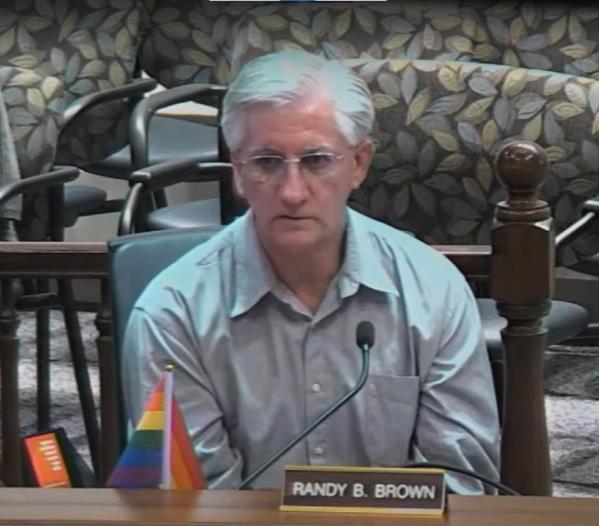
Yes, CMC would take away from others. And the way the Advisory Committee and the County’s Rochester-based consultant did the math, the money given the hospital would come at the expense to Enfield aspirants, most notably the Enfield Community Council.
Though it had cleared the Fund Advisory Committee’s first round triage of more than 200 qualifying applications and initially gained support from as many as four of the committee’s six members, the Enfield Community Council’s (ECC’s) request for money to tack a mental health services wing onto its community center dropped out of funding eligibility Monday as the Advisory Committee ratified, without significant change, a complex “merged spreadsheet” engineered by Tompkins County’s consultant, the MRB Group.
Previously eliminated from consideration through joint County and MRB rules were Enfield Food Distribution’s $1.66 Million request to construct a new Enfield Food Pantry, and the Enfield Volunteer Fire Company’s $207,000 multi-faceted capital improvement project. A trio of funding requests by the Town of Enfield itself was similarly rejected during first-round review.
The $1.5 Million funding package for CMC, endorsed Monday by the Advisory Committee and passed on to the Legislature, would partially fund the Medical Center’s plans to construct an “Intensive Crisis Stabilization Center.” CMC’s application carries by far the largest dollar total of anything the committee recommended.
“Quite clearly, by the Resolution now drafted, your committee is shortchanging Enfield,” Enfield Councilperson Robert Lynch (this writer) wrote the Advisory Committee and all 13 County legislators prior to the December 5th meeting. “I trust future deliberations will correct this shortcoming and right this wrong,” Lynch’s message concluded.
As it stood at the end of Monday’s committee session, the committee’s plan to apportion 6.5 Million Community Recovery Fund dollars among 52 recommended applicants would go to the full Legislature December 20th for amendments and an up-or-down vote. Individual legislators could pull out any line item they chose, amend its dollar figure, or delete it altogether. And that’s how it will likely occur.
But what sprang out of nowhere Tuesday night was an hour-long legislative discussion about the funding process a full two weeks before it was scheduled to occur. And during the impromptu debate, Newfield-Enfield legislator Brown questioned the power wielded by the six-member Advisory Committee in deciding which applications will survive for a final vote, and which ones will simply die.
“I think the process you’re proposing gives the committee too much power,” Brown said.
Brown sought, but failed, in an attempt to allow every legislator—not just committee members—the opportunity to navigate the consultant’s complex electronic spreadsheet to prioritize which applicants they, themselves, would accept or reject.
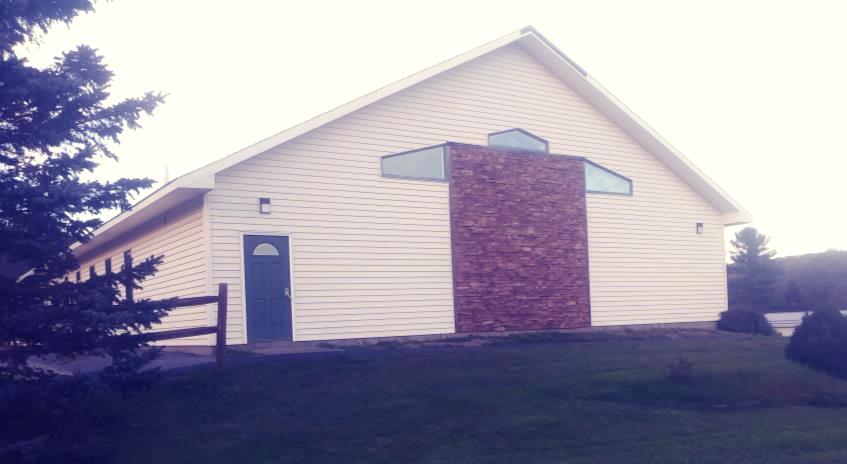
“You’re not going to know if you don’t go through the exercise,” Brown told the Legislature. “And if you had the chance to do it in committee, then every legislator has to share the same opportunity. It’s not right.”
But others think differently. Some would prefer the committee-drafted funding package be kept intact as much as possible to the point of having the full Legislature ratify it without any tinkering.
“I would hope that the members of the committee, at least, could agree that whatever we recommend coming out of today’s meeting we will support in full,” the Legislature’s Budget Chair, Deborah Dawson, told the committee Monday. “That would be extremely helpful.”
Helpful, and also politically crafty. With the full Legislature one member short and eight votes required for any amendment to prevail, all six committee members, should they hold together, could block any funding change on the Legislature’s floor.
Yet in truth, the consolidated Resolution by which the committee advanced Community Recovery funding Monday runs contrary to the Legislature’s earlier intent, one clearly implied on the County’s own Recovery Fund webpage. Stated plans call for only those applications totaling less than $250,000 to be bundled for a vote. Those each topping a quarter-Million—currently eight on the Resolution’s list—would receive individual consideration.
Legislative leaders, including the Legislature’s Chair, Shawna Black, voiced comfort Monday about changing rules on the fly.
“I honestly think that if we start taking things out of the Resolution that we’re presenting to the Legislature, it starts picking apart the decisions that we’ve made,” Black said. “If we start separating these into eight different resolutions, you’re going to see this completely open up on the chamber floor.”
“We could be here until 2045,” Budget Chair Dawson remarked.
Of course, an open-floor debate over what deserves support is exactly what many advocates for agencies denied funding would like to see. And judging from legislator discussions one night later, cherry-picking is what they may get.
Just how deep into the pile of 212 Recovery Fund submissions the Legislature will dig December 20th remains to be determined. Brown would prefer the entire list—which would include both the Enfield Food Pantry and the Fire Company—remain open for consideration. But a larger plurality indicated by a straw vote Tuesday that they want a tighter list, a list limited to the 80 candidates that survived the committee’s first-round review in November.
Dryden’s Greg Mezey joined Newfield’s Brown in urging applicants like the pantry and the EVFC remain in the running.
“Do I agree with everything (the committee recommended)? No,” said Mezey. “Do I wish we had the opportunity to vote (individually) on the larger items? Absolutely.”
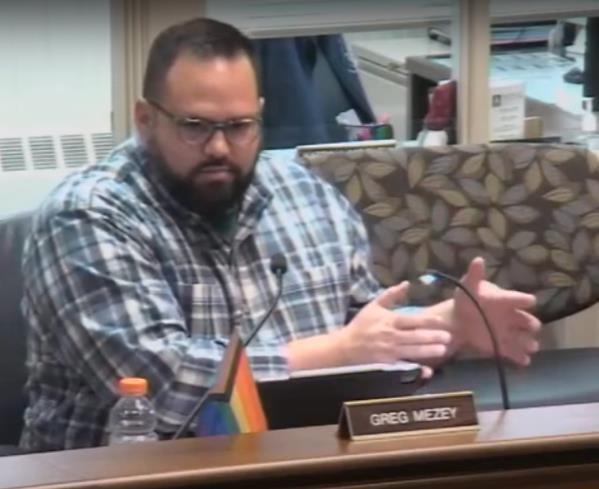
In a pair of straw votes that a frustrated and impasse-weary Shawna Black called near the close of Tuesday’s meeting, only Mezey and Lansing’s Mike Sigler joined Brown in his call for every member to score every single Recovery Fund applicant. More legislators, though not a sufficient majority, would have reviewed scoring with only the top 80 candidates included. As the second of the two polls ended, legislators decided to subject only the committee’s work to legislative scrutiny. Nevertheless, when the committee recommendation reaches the legislative floor December 20th, expect amendment after amendment… after amendment.
By that route, perhaps the Food Pantry, the ECC and the EVFC proposals could gain a second life.
“If it’s 80, it’s 80,” Brown conceded. “I’ll add mine in. I guess I have the right to do that, to put in ones that I would support. And I may only get one vote. But I’ve got to do it—no choice.”
****
Deletion of the Enfield Community Council’s application from the final Resolution speaks to the complexity by which consultants allowed each committee member to play musical chairs with dollar signs. A many-lined, multi-colored spreadsheet, shared publicly only minutes before Monday’s meeting, permitted members to individually rank-choice the 80 applicants that had received preliminary support by at least two-thirds of the committee at earlier meetings. Of the several Enfield applicants, only the Community Council had crossed that threshold.
Committee members could not only affirm or deny support to any applicant in making spreadsheet choices. They could also recommend full or partial funding for each. MRB staff then collated the individual preferences and ranked them in priority. Consultants made assumptions. For one thing, they gave applicants achieving support from all six committee members top billing. They placed those with five-member support next-down on the list, and applications gaining only four votes thereafter. Applicants securing only a three-three tie or lesser support were kicked out. Within any category, the stronger the support for full-funding, the mightier its application became.
Consultants calculated funding levels based on averaging committee member recommendations. MRB’s Michael N’Dolo, in response to legislator Anne Koreman’s inquiry, acknowledged that whenever at least four members recommended full-funding, MRB had assigned the full-dollar amount, regardless of what anyone else had suggested.
“It’s the largest spreadsheet I’ve ever seen,” Committee Chair Dan Klein interjected.
Yes, and also the most complicated. And some might insist the most unfair as well.
Coldly objective standards prevailed throughout MRB’s number-crunching. The ECC’s disqualification came when member rankings granted its application only three-votes out of six. MRB relegated ECC to a grayed-out funding dungeon at the sheet’s bottom. Nonetheless, the consultant placed the Community Council just five lines below the funding cutoff. As they say, so close, yet so far away.
The Community Council sought $206,000 from the Recovery fund. ECC would use the money to replace its modular “teen space” trailer with a permanent structure to, in its application’s words, provide “shared office space and meeting space for mental health and other community service professionals.” Though it secured four supportive votes during first-round review, only three members voted for funding on the spreadsheet. They were legislators Klein, Koreman, and Veronica Pillar. Each voted for full funding. Legislature Chair Black, who’d backed ECC during the first round, dropped her support this second time.
But the biggest of the big-ticket applicants that survived the committee’s final triage was Cayuga Medical Center. Its $1.5 Million application would fund a fraction of the non-profit hospital’s $9 Million cost of building a center to provide, as its application states, “24/7 mental health and substance abuse crisis support and safe, effective, evidence-based care.” Committee and consultant procedures largely ignored CMC’s vast alternate funding streams.
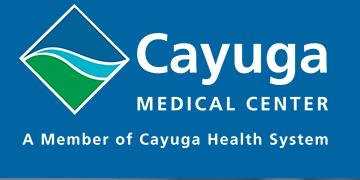
Carrying lesser price tags than CMC’s recommended award, yet still within the top-tier of recommended winners, were proposals by Second Wind Cottages to construct “25 temporary campsite shelters” in Newfield for the homeless ($510,000 recommended); the Greater Ithaca Activities Center, for money to transform a gymnasium into a center for teen afterschool programs ($500,000); and an initiative by Sustainable Fingerlakes to retrofit mobile homes with heat pumps.
The Sustainable Fingerlakes application, by the way, was endorsed in late-October on a four-to-one vote by the Enfield Town Board. Dissenting Councilperson Lynch at the time worried that the Town Board’s endorsement could jeopardize more worthwhile local projects. Lynch also said trailer retrofits, in some instances, amount to “putting lipstick on a pig.”
Using its decidedly green-eyeshade frame of reference, the Advisory Committee Monday unanimously passed on its recommendations to the full Legislature with little change from the group calculator’s initial rankings.
During its Monday deliberations, only one significant funding amendment was proposed. And a committee majority brushed it back. Veronica Pillar proposed zeroing-out all funding to Bangs Ambulance for proposed purchase of a $150,000 critical care transport unit and also trimming several other applications to partially fund a cooperative farming effort by Khuba International.
Pillar’s amendment lost four votes to two. “Once you open this up, it becomes a process of favorites, and that’s something we promised our community we would not do,” Shawna Black said in opposing Pillar’s suggested revision.
Yet for many in Enfield, it may become a question of equity and fairness; maybe rural justice. Will those farthest removed from Ithaca’s population and prosperity receive their equal slice of the Recovery Fund pie?
“Enfield, Tompkins County’s poorest town, always seems to get forgotten by those downtown,” Councilperson Lynch quoted a prominent Enfield constituent as saying as he wrote County legislators Tuesday. Lynch’s quote was paraphrased on the Legislature’s floor later that night by Randy Brown.
“What’s done is done,” Lynch wrote legislators of the committee’s earlier action as the Councilperson eyed the late-December meeting at which final funding could be awarded. “At that meeting, I expect—and encourage—vigorous, passionate debate,” the Councilperson wrote. “I plan to attend.”
It’s sure to be a long meeting, that Tuesday before Christmas. Legislators this more recent Tuesday predicted that public comments alone could consume the first two hours. Black would limit legislative debate thereafter to just another couple hours. If debate drags on, she warned, a final vote would be postponed until January.
“I know that’s not typically how we’ve done things,” Black said in setting the two-hour limit. “But this is a really big decision, and we’ve worked real hard on it, and we need to get it right.”
###

